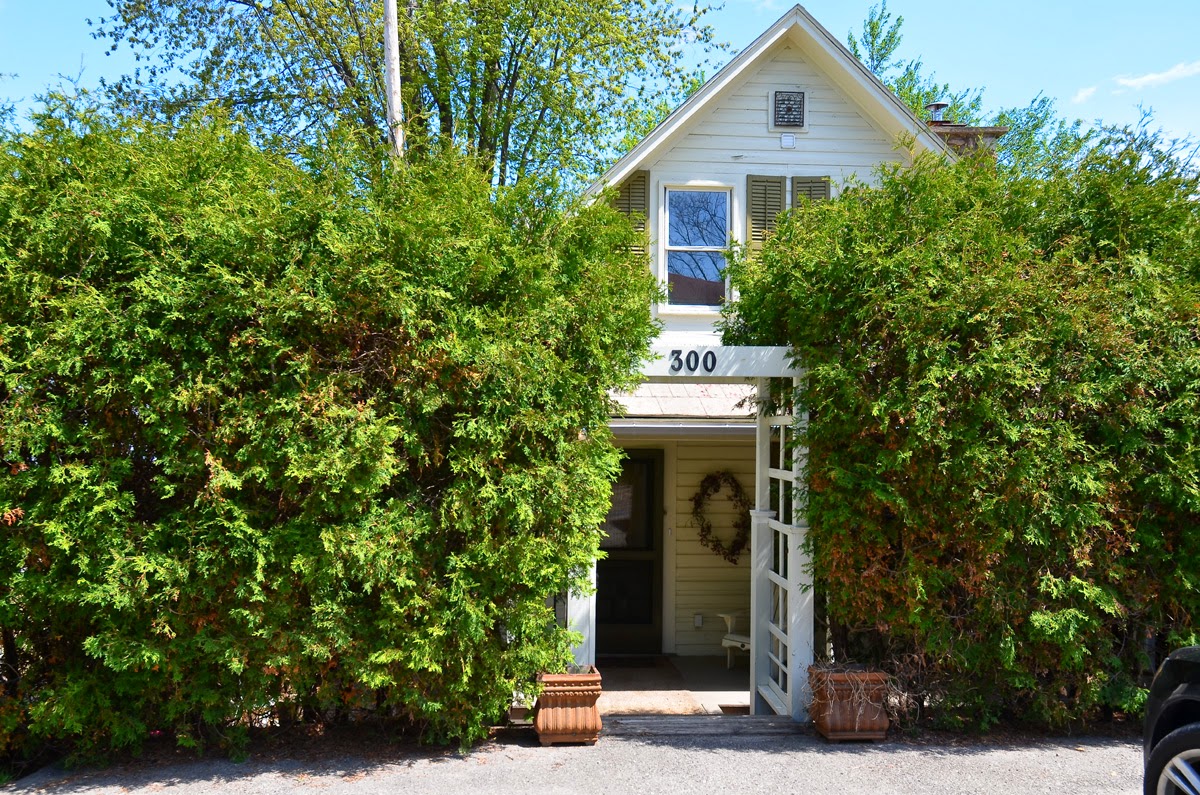Natural Slowing of Home Price Appreciation Delayed in Ontario, Accelerated in the West
Steep oil price declines expected to impact key markets
TORONTO, January 14, 2015 – Across the country,
average home prices showed modest to healthy year-over-year gains in
most markets in the fourth quarter of 2014, according to the Royal
LePage House Price Survey and Market Survey Forecast released today.
During the quarter, the average price of a home in Canada increased
between 4.5 per cent and 6.7 per cent year-over-year. Nationally, the
average price of detached bungalows rose 6.7 per cent $406,218, while
standard two-storey homes increased 6.0 per cent to $443,379, and
standard condominiums saw a 4.5 per cent increase to $257,624. Against
the backdrop of a decidedly mixed macroeconomic environment at home and
abroad, Royal LePage expects home prices to increase moderately in 2015,
forecasting a 2.9 per cent national increase for the year ahead.
“In the fourth quarter of 2014, real estate markets unfolded as we
anticipated, with modest year-over-year price changes in most regions
contrasted against continued steep price increases in Western Canada and
Greater Toronto,” said Phil Soper, president and chief executive of
Royal LePage. “This follows a similar trend observed in the third
quarter of 2014, when we predicted the beginning of a cyclical slowing
in home price appreciation, to a pace that better reflects broad
economic factors.”
“For our 2015 forecast, we could not ignore the potential impact of
the steep decline in the price of oil on housing markets across Canada,”
continued Soper. “In the immediate term we anticipate that the natural
slowing of home price appreciation we called for in the third quarter
of 2014 will be delayed in Central Canada and accelerated in the West by
recent developments in the energy sector.”
For the first half of 2015, Royal LePage expects a confluence of
factors and the lower cost of oil to support continued positive price
momentum in the Greater Toronto Area (GTA), which should experience the
highest major market price increases. Ontario’s strengthened export
economy buttressed by a flourishing U.S. economy and lower Canadian
dollar; improved labour market trends; and unsatisfied demand from
countless homebuyers who lost out in 2014 GTA bidding wars are expected
to carry the all-important 2015 spring market. Meanwhile in Atlantic
Canada, buyers should continue to have the upper hand, with home prices
across the region forecast to rise below general inflation.
“In contrast to many parts of Central Canada, we expect increased
opportunity for homebuyers in Western Canada, but that opening is
unlikely to last. Over the longer term, we foresee a return to regional
home price appreciation that is above both the historical average and
national trends in general, when energy markets recover,” added Soper.
“In the interim, slowed growth in the price of homes will be a welcome
sign for many people in the West, especially in pricy markets like
Vancouver where first-time buyers have been frustrated by a
hyper-competitive market and home prices that have escalated at a
feverish pace.”
Royal LePage notes that potential threats to the health of the
Canadian housing market remain, including sharp increases in interest
rates, further federal government intervention in the mortgage market or
a serious stumble on America’s road to full economic recovery, but
these are all considered unlikely in 2015.
“Ultimately the biggest threat to the Canadian housing market is a
decline in consumer confidence, which could result from worsened
employment prospects or decreased purchasing power, be it real or
perceived. In this light, we will be watching market developments
closely in the regions most negatively impacted by oil price declines,
such as Alberta, Saskatchewan and Newfoundland,” concluded Soper.
Regional Market Summaries
A continuing inventory surplus has seen a steady market continue in
Halifax
with housing prices remaining relatively flat in the fourth quarter.
The average price of a standard condominium increased by 2.8 per cent
year-over-year to $220,500 while standard two-storey homes increased by
1.2 per cent to $333,500. Detached bungalows decreased slightly,
dropping by 0.8 per cent to $297,633.
St. John’s experienced contrasting results to the
rest of Atlantic Canada as its market saw significant price surges
across all housing types. Strong demand in the region saw the average
price for standard two-storey homes and detached bungalows both jump 6.9
per cent year-over-year, rising to $428,000 and $316,333, respectively.
Standard condominiums also appreciated in the fourth quarter,
increasing 6.3 per cent to $335,133.
Montreal saw a relatively flat market in the fourth
quarter of 2014, with the average price of detached bungalows increasing
2.1 per cent year-over-year to $297,300. The price of standard
condominiums rose slightly with a 1.1 per cent increase to $241,983,
while standard two-storey homes were essentially flat with an increase
of 0.2 per cent to $402,321.
A healthy and confident
Ottawa housing market saw
moderate gains in spite of supply continuing to outstrip demand.
Detached bungalows and standard two-storey homes increased 2.2 per cent
year-over-year to $404,708 and 2.1 per cent to $407,440,
respectively. Standard condominiums saw a slight decline in price,
dropping 0.6 per cent to $258,817.
Continuing low inventory and a complete lack of a winter slowdown saw significant increases across all major
Toronto
housing types. Detached bungalows rose 11.6 per cent to $647,535, while
prices for standard two storey homes increased 8.6 per cent to
$745,062. Standard condominium prices saw an increase of 6.9 per cent
year-over-year to $384,680.
The
Winnipeg housing market saw relatively flat
results continuing in the fourth quarter as inventory sat at a 10-year
high. As a result standard two-storey homes saw a modest increase of 2.2
per cent year-over-year to $336,328. Meanwhile detached bungalows saw a
slight increase of 0.1 per cent to $303,987 and standard condominiums
saw a slight decrease of 0.2 per cent to $207,709.
The
Regina housing market also witnessed a softening
of prices this quarter. A supply imbalance pushed prices down with
standard two-storey homes dropping 6.8 per cent year-over-year to
$345,000 and detached bungalows dropping 6.5 per cent to $310,000. These
declines were juxtaposed by a 5.4 per cent increase in the average
price for standard condominiums, which rose to $223,500.
The
Calgary housing market continued to be among the
strongest across the country. Demand was strong for homes across all
housing types, and continued to outstrip supply. Average prices for
detached bungalows jumped 9.1 per cent year-over-year to $511,889 and
standard two-storey homes increased 8.5 per cent to $500,320. Standard
condominiums also experienced robust growth, rising 9.1 per cent to
$311,644.
A competitive landscape and short supply of inventory resulted in continued appreciation of
Edmonton
housing prices. Strong economic growth in the city saw detached
bungalows increase 8.3 per cent year-over-year to an average price of
$373,244 and standard two-storey homes surge 9.4 per cent to $397,045.
Standard condominiums also saw a sizable increase, rising 12.2 per cent
year-over-year to $250,953.
The continued short supply of single family homes became the focus of intense demand from
Vancouver
buyers in the fourth quarter of 2014. The rare nature of these housing
types saw the average price for detached bungalows increase 7.5 per cent
year-over-year to $1,124,642 and standard two-storey homes increase 7.1
per cent to $1,233,182, while condominiums rose 3.8 per cent to
$511,150.
Royal LePage’s quarterly House Price Survey shows the annual
change of prices for key housing segments in select national markets.
Click here to view the chart
Royal LePage 2015 Market Survey Forecast
Royal LePage Q4 2014 House Price Survey – Data Chart
About the Royal LePage House Price Survey
The Royal LePage House Price Survey is the largest, most
comprehensive study of its kind in Canada, with information on seven
types of housing in over 250 neighbourhoods from coast to coast. This
release references an abbreviated version of the survey which highlights
house price trends for the three most common types of housing in Canada
in 90 communities across the country. A complete database of past and
present surveys is available on the Royal LePage website at
www.royallepage.ca.
Current figures will be updated following the complete tabulation of
the data for the fourth quarter of 2014. A printable version of the
fourth quarter 2014 survey will be available online on February 9, 2015.
Housing values in the Royal LePage House Price Survey are Royal LePage
opinions of fair market value in each location, based on local data and
market knowledge provided by Royal LePage residential real estate
experts.
About Royal LePage
Serving Canadians since 1913, Royal LePage is the country’s leading
provider of services to real estate brokerages, with a network of over
16,000 real estate professionals in more than 600 locations nationwide.
Royal LePage is the only Canadian real estate company to have its own
charitable foundation, the Royal LePage Shelter Foundation, dedicated to
supporting women’s and children’s shelters and educational programs
aimed at ending domestic violence. Royal LePage is a Brookfield Real
Estate Services Inc. company, a TSX-listed corporation trading under the
symbol TSX:BRE.
For more information visit:
www.royallepage.ca.














